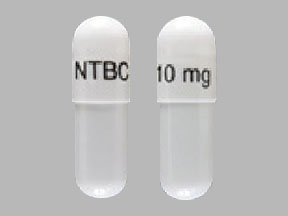Orfadin Side Effects
Generic name: nitisinone
Medically reviewed by Drugs.com. Last updated on May 5, 2023.
Note: This document contains side effect information about nitisinone. Some dosage forms listed on this page may not apply to the brand name Orfadin.
Applies to nitisinone: oral capsule, oral suspension, oral tablet.
Serious side effects of Orfadin
Along with its needed effects, nitisinone (the active ingredient contained in Orfadin) may cause some unwanted effects. Although not all of these side effects may occur, if they do occur they may need medical attention.
Check with your doctor immediately if any of the following side effects occur while taking nitisinone:
Less common
- Black, tarry stools
- bleeding gums
- blindness
- blood in the urine or stools
- bloody nose
- blurred vision
- burning, dry, or itching eyes
- change in color vision
- chest pain or discomfort
- chills
- cough
- decreased vision
- difficulty seeing at night
- excessive eye tearing
- eye redness, irritation, or pain
- fever
- increased sensitivity of the eyes to sunlight
- painful or difficult urination
- pinpoint red spots on the skin
- redness, pain, swelling of the eye, eyelid, or inner lining of the eyelid
- sore throat
- sores, ulcers, or white spots on the lips or in the mouth
- swollen or painful glands
- unusual bleeding or bruising
- unusual tiredness or weakness
Rare
- Agitation
- back pain
- bluish color of the fingernails, lips, skin, palms, or nail beds
- confusion
- cough with mucus
- difficulty with breathing
- dizziness
- drowsiness
- fast heartbeat
- headache
- irritability
- seeing or hearing things that are not there
- seizures
- stiff neck
- tightness in the chest
- vomiting
Other side effects of Orfadin
Some side effects of nitisinone may occur that usually do not need medical attention. These side effects may go away during treatment as your body adjusts to the medicine. Also, your health care professional may be able to tell you about ways to prevent or reduce some of these side effects.
Check with your health care professional if any of the following side effects continue or are bothersome or if you have any questions about them:
Less common
- Dry skin
- hair loss or thinning
- itching or skin rash
- red, swollen skin
- scaly skin
Rare
- Cold sweats
- cool, pale skin
- depression
- headache
- increased hunger
- nausea
- nightmares
- shakiness
- slurred speech
- stomach pain
For Healthcare Professionals
Applies to nitisinone: oral capsule, oral suspension, oral tablet.
General
The more commonly reported side effects have included elevated tyrosine levels, thrombocytopenia, leukopenia, conjunctivitis, corneal opacity, keratitis, photophobia, eye pain, blepharitis, cataracts, granulocytopenia, epistaxis, pruritus, exfoliative dermatitis, dry skin, maculopapular rash, and alopecia.[Ref]
Hepatic
Common (1% to 10%): Liver failure (7%), porphyria (1%)
Frequency not reported: Hepatic function disorder, elevated hepatic enzymes, liver enlargement[Ref]
Hematologic
Common (1% to 10%): Thrombocytopenia (3%), leucopenia (3%), granulocytopenia (1%), epistaxis (1%)
Uncommon (0.1% to 1%): Anemia[Ref]
Metabolic
Very common (10% or more): Elevated tyrosine levels (10% or greater)
Uncommon (0.1% to 1%): Dehydration, hypoglycemia[Ref]
Nervous system
Frequency not reported: Seizures, brain tumor, encephalopathy, headache, hyperkinesia, nervousness, somnolence[Ref]
Ocular
Common (1% to 10%): Conjunctivitis (2%), corneal opacity (2%), keratitis (2%), photophobia (2%), blepharitis (1%), eye pain (1%), cataracts (1%)[Ref]
Oncologic
Common (1% to 10%): Hepatic neoplasm (hepatic neoplasm [3.2%]; hepatic neoplasm, malignant [4.4%])
Uncommon (0.1% to 1%): Benign brain neoplasm; lymphoma, malignant[Ref]
Dermatologic
Uncommon (0.1% to 1%): Pruritus (1%), exfoliative dermatitis (1%), dry skin (1%), maculopapular rash (1%), alopecia (1%)[Ref]
Gastrointestinal
Frequency not reported: Abdominal pain, diarrhea, enanthema, gastritis, gastroenteritis, gastrointestinal hemorrhage, melena, tooth discoloration[Ref]
Genitourinary
Uncommon (0.1% to 1%): Amenorrhea, hematuria[Ref]
Musculoskeletal
Frequency not reported: Pathological fracture[Ref]
Other
Frequency not reported: Death, cyanosis, thirst, infection, septicemia, otitis[Ref]
Respiratory
Frequency not reported: Bronchitis, respiratory insufficiency, cyanosis[Ref]
More about Orfadin (nitisinone)
- Check interactions
- Compare alternatives
- Pricing & coupons
- Drug images
- Dosage information
- During pregnancy
- Generic availability
- Drug class: miscellaneous metabolic agents
- Breastfeeding
- En español
Patient resources
Other brands
Professional resources
Other brands
Related treatment guides
References
1. Product Information. Orfadin (nitisinone). Orphan Medical. 2002.
Further information
Always consult your healthcare provider to ensure the information displayed on this page applies to your personal circumstances.
Some side effects may not be reported. You may report them to the FDA.

